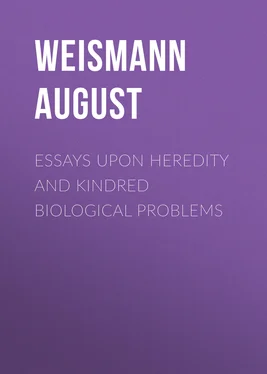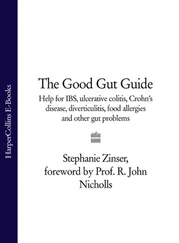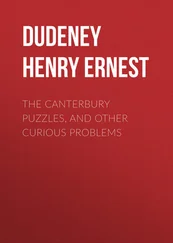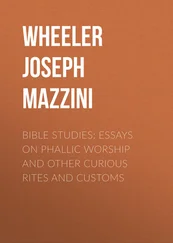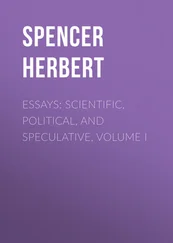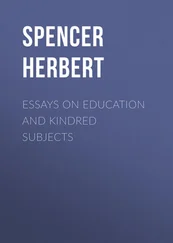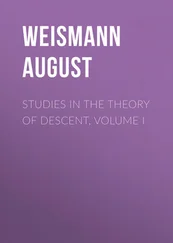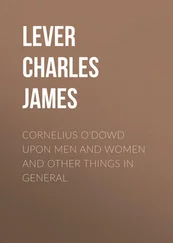August Weismann - Essays Upon Heredity and Kindred Biological Problems
Здесь есть возможность читать онлайн «August Weismann - Essays Upon Heredity and Kindred Biological Problems» — ознакомительный отрывок электронной книги совершенно бесплатно, а после прочтения отрывка купить полную версию. В некоторых случаях можно слушать аудио, скачать через торрент в формате fb2 и присутствует краткое содержание. Жанр: foreign_antique, Биология, на английском языке. Описание произведения, (предисловие) а так же отзывы посетителей доступны на портале библиотеки ЛибКат.
- Название:Essays Upon Heredity and Kindred Biological Problems
- Автор:
- Жанр:
- Год:неизвестен
- ISBN:нет данных
- Рейтинг книги:5 / 5. Голосов: 1
-
Избранное:Добавить в избранное
- Отзывы:
-
Ваша оценка:
- 100
- 1
- 2
- 3
- 4
- 5
Essays Upon Heredity and Kindred Biological Problems: краткое содержание, описание и аннотация
Предлагаем к чтению аннотацию, описание, краткое содержание или предисловие (зависит от того, что написал сам автор книги «Essays Upon Heredity and Kindred Biological Problems»). Если вы не нашли необходимую информацию о книге — напишите в комментариях, мы постараемся отыскать её.
Essays Upon Heredity and Kindred Biological Problems — читать онлайн ознакомительный отрывок
Ниже представлен текст книги, разбитый по страницам. Система сохранения места последней прочитанной страницы, позволяет с удобством читать онлайн бесплатно книгу «Essays Upon Heredity and Kindred Biological Problems», без необходимости каждый раз заново искать на чём Вы остановились. Поставьте закладку, и сможете в любой момент перейти на страницу, на которой закончили чтение.
Интервал:
Закладка:
The strongest flyers—the hawk-moths and butterflies—must be looked upon as the most specialised and highest types among the Lepidoptera. Not only do they possess organs for flight in their most perfect form, but also organs for feeding—the characteristic spiral proboscis or ‘tongue.’
There are certain moths (among the Bombyces) of which the males fly as well as the hawk-moths, while the females are unable to use their large wings for flight, because the body is too heavily weighted by a mass of eggs, all of which reach maturity at the same time. Such species, as for instance Aglia tau , are unable to distribute their eggs over a wide area, but are obliged to lay them all in a single spot. They can however do this without harm to the species, because their caterpillars live upon forest trees, which provide abundant food for a larger number of larvae than can be produced by the eggs of a single female. The eggs of Aglia tau are deposited directly after pairing, and shortly afterwards the insect dies at the foot of the tree among the moss-covered roots of which it has passed the winter in the pupal state. The female moth seldom lives for more than three or four days; but the males which fly swiftly in the forests, seeking for the less abundant females, live for a much longer period, certainly from eight to fourteen days 2.
The females of the Psychidae also deposit all their eggs in one place. The grasses and lichens upon which their caterpillars live grow close at hand upon the surface of the earth and stones, and hence the female moth does not leave the ground, and generally does not even quit the pupa-case, within which it lays its eggs; as soon as this duty is finished, it dies. In relation to these habits the wings and mouth of the female are rudimentary, while the male possesses perfectly developed wings.
The causes which have regulated the length of life in these cases are obvious enough, yet still more striking illustrations are to be found among insects which live in colonies.
The duration of life varies with the sex in bees, wasps, ants, and termites: the females have a long life, the males a short one; and there can be no doubt that the explanation of this fact is to be found in adaptation to external conditions of life.
The queen-bee—the only perfect female in the hive—lives two to three years, and often as long as five years, while the male bees or drones only live four to five months. Sir John Lubbock has succeeded in keeping female and working ants alive for seven years—a great age for insects 3,—while the males only lived a few weeks.
These last examples become readily intelligible when we remember that the males neither collect food nor help in building the hive. Their value to the colony ceases with the nuptial flight, and from the point of view of utility it is easy to understand why their lives should be so short [See Note 7and Note 9]. But the case is very different with the female. The longest period of reproduction possible, when accompanied by very great fertility, is, as a rule, advantageous for the maintenance of the species. It cannot however be attained in most insects, for the capability of living long would be injurious if all individuals fell a prey to their enemies before they had completed the full period of life. Here it is otherwise: when the queen-bee returns from her nuptial flight, she remains within the hive until her death, and never leaves it. There she is almost completely secure from enemies and from dangers of all kinds; thousands of workers armed with stings protect, feed, and warm her; and in short there is every chance of her living through the full period of a life of normal length. And the case is entirely similar with the female ant. In neither of these insects is there any reason why the advantages which follow from a lengthened period of reproductive activity should be abandoned [See Note 6].
That an increase in the length of life has actually taken place in such cases seems to be indicated by the fact that both sexes of the saw-flies—the probable ancestors of bees and ants—have but a short life. On the other hand, the may-flies afford an undoubted instance of the shortening of life. Only in certain species is life as short as I have indicated above; in the majority it lasts for one or more days. The extreme cases, with a life of only a few hours, form the end of a line of development tending in the direction of a shortened life. This is made clear by the fact that one of these may-flies ( Palingenia ) does not even leave its pupa-skin, but reproduces in the so-called sub-imago stage.
It is therefore obvious that the duration of life is extremely variable, and not only depends upon physiological considerations, but also upon the external conditions of life. With every change in the structure of a species, and with the acquisition of new habits, the length of its life may, and in most cases must, be altered.
In answering the question as to the means by which the lengthening or shortening of life is brought about, our first appeal must be to the process of natural selection. Duration of life, like every other characteristic of an organism, is subject to individual fluctuations. From our experience with the human species we know that long life is hereditary. As soon as the long-lived individuals in a species obtain some advantage in the struggle for existence, they will gradually become dominant, and those with the shortest lives will be exterminated.
So far everything is quite simple; but hitherto we have only considered the external mechanism, and we must now further inquire as to the concomitant internal means by which such processes are rendered possible.
This brings us face to face with one of the most difficult problems in the whole range of physiology,—the question of the origin of death. As soon as we thoroughly understand the circumstances upon which normal death depends in general, we shall be able to make a further inquiry as to the circumstances which influence its earlier or later appearance, as well as to any functional changes in the organism which may produce such a result.
The changes in the organism which result in normal death,—senility so-called,—have been most accurately studied among men. We know that with advancing age certain alterations take place in the tissues, by which their functional activity is diminished; that these changes gradually increase, and finally either lead to direct or so-called normal death, or produce indirect death by rendering the organism incapable of resisting injuries due to external influences. These senile changes have been so well described from the time of Burdach and Bichat to that of Kussmaul, and are so well known, that I need not enter into further details here.
In answer to an inquiry as to the causes which induce these changes in the tissues, I can only suggest that the cells which form the vital constituents of tissues are worn out by prolonged use and activity. It is conceivable that the cells might be thus worn out in two ways; either the cells of a tissue remain the same throughout life, or else they are being continually replaced by younger generations of cells, which are themselves cast off in their turn.
In the present state of our knowledge the former alternative can hardly be maintained. Millions of blood corpuscles are continually dying and being replaced by new ones. On both the internal and external surfaces of the body countless epithelial cells are being incessantly removed, while new ones arise in their place; the activity of many and probably of all glands is accompanied by a change in their cells, for their secretions consist partly of detached and partly of dissolved cells; it is stated that even the cells of bone, connective tissue, and muscle undergo the same changes, and nervous tissue alone remains, in which it is doubtful whether such a renewal of cells takes place. And yet as regards even this tissue, certain facts are known which indicate a normal, though probably a slow renewal of the histological elements. I believe that one might reasonably defend the statement,—in fact, it has already found advocates,—that the vital processes of the higher (i.e. multicellular) animals are accompanied by a renewal of the morphological elements in most tissues.
Читать дальшеИнтервал:
Закладка:
Похожие книги на «Essays Upon Heredity and Kindred Biological Problems»
Представляем Вашему вниманию похожие книги на «Essays Upon Heredity and Kindred Biological Problems» списком для выбора. Мы отобрали схожую по названию и смыслу литературу в надежде предоставить читателям больше вариантов отыскать новые, интересные, ещё непрочитанные произведения.
Обсуждение, отзывы о книге «Essays Upon Heredity and Kindred Biological Problems» и просто собственные мнения читателей. Оставьте ваши комментарии, напишите, что Вы думаете о произведении, его смысле или главных героях. Укажите что конкретно понравилось, а что нет, и почему Вы так считаете.
